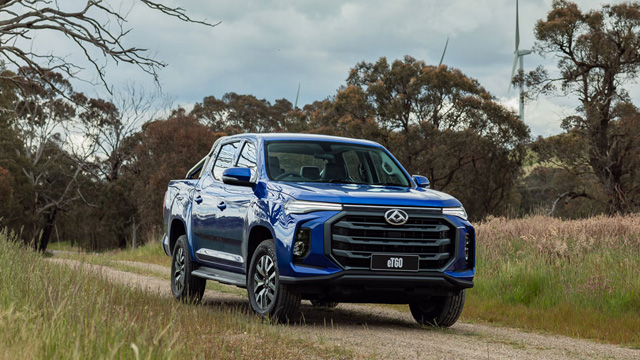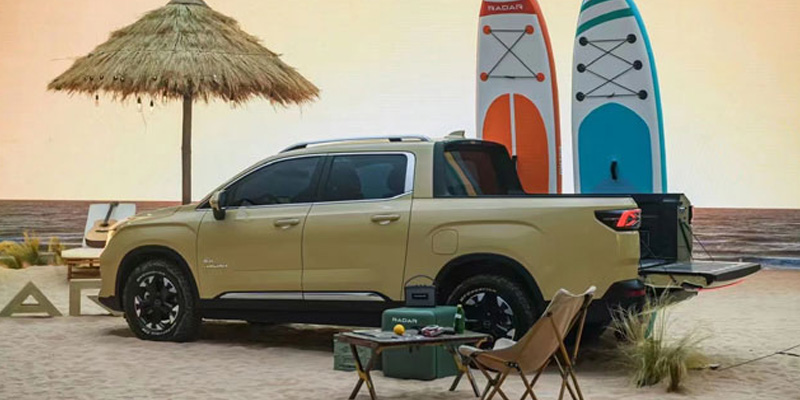

EV sales in Australia hit 87,000 in 2023 – almost triple that of 2022 – while the market share increased 7.2 per cent up from 3 per cent, as car sales across the board hit a record 1.2 million.
The figures, released by VFACTS last Thursday, were a bittersweet moment for the EV industry.
It was a groundbreaking moment twelve months ago when news broke that the Tesla Model 3 had outsold Toyota’s medium sedan mainstay, the Camry, in 2022.
Now, the Tesla Model 3 has not only outsold the Toyota Camry in 2023, but it has sold 70 per cent more (17,347 compared to 10,581) - making it the top seller for all sedans in Australia in the last 12 months.
This is even as Model 3 sales are declining now that Tesla’s mass-market electric SUV, the Model Y, has found its foothold in Australia.
In January just shy of 3,000 Model 3s were delivered to customers, but just 841 were handed over to customers in the last month of the year. With the arrival of the updated 2024 Tesla Model 3 we may see renewed interest in 2024.
Meanwhile, the Tesla Model Y held the title of best-selling EV in 2023 in Australia, and sixth best-selling vehicle overall. But, it just barely missing the mark in its body segment.
The US-based EV maker sold 30,000 electric SUVs in 2023, coming very close to grabbing the title of number one SUV from the Toyota RAV4, which was the best-selling SUV overall and came in at number four on the overall sales ladder.
Neither did the Model Y shift Australia’s preference for large utility vehicles with high emissions. The top three big sellers for the year were the Ford Ranger, the Toyota Hilux, and the Isuzu D-Max – 155,669 vehicles in total and 12.7 per cent of the market.
Toyota, the largest seller of cars in Australia, says the sales figures send “a powerful message,” Carsguide reports.
It says its sales success is due to its "multipath” approach to vehicle sales. That is, selling vehicles with a variety of powertrains.
But, each of these top three utes are available only with a combustion engine. Put together, they have CO2 emissions ratings of anywhere from 192gm/km to 378gm/km according to the Green Vehicle Guide.
To put this in perspective, legislated CO2 emissions targets for carmakers in Europe are 95 grams per kilometre (this means their average emissions across all the vehicles they sell must be equal to or under that, or pay big fines.)
Toyota’s hybrid RAV4 emissions range from 108-112gm/km in an urban environment, while its petrol-powered RAV4 ranges from 162-201gm/km. Toyota plans on introducing the all-electric bZ4X SUV here in 2024, but it will have to sell a lot of them to significantly reduce the impact of its best sellers.


While utes are clearly popular with Australian drivers, it cannot be ignored that these best-selling gas guzzlers are sending Australia’s vehicle emissions upwards. In September, the National Transport Commission (NTC) reported that Australia’s transport-related emissions have flatlined despite increasing EV sales.
“Sales of 4x4 and 4x2 utes increased by more than 43,000, and large SUV sales increased by around 25,000. The emissions intensity for many of these popular vehicles exceeds 210 g/km, with no option yet in Australia to purchase an electric ute,” the NTC report said of 2022 car sales. Ute sales increased again in 2023 by almost 20,000 units.
And it is still impossible to buy an electric ute of any interest in Australia. LDV introduced the eT60 in 2022 but missed the mark. Its rear-wheel-drive format and lacklustre 1 tonne tow capacity at double the price of the fossil-fuelled LDV T60, failed to attract sales in a market where 4x4 sales outweigh 4x2 seven to one.
There have been rumours but still no solid confirmations of all-electric utes as of yet. LDV may introduce another, more powerful, electric ute in 2024 but has not announced a confirmed timing.
GWM said to NRMA in a statement that, "it is unlikely that we’ll see a fully electric powertrain for the GWM Ute come to Australia in 2024 but we will continue to watch development very closely."
Likewise, a plug-in hybrid BYD ute has arrived for evaluation and testing as CarExpert reported, but there is no set date for an all-electric version.
There are plenty of electric utes available overseas, but it would seem that until carmakers are strongly incentivised, they are just not coming to Australia with any great haste.
While Tesla remained the market leader in EVs for 2023, electric cars from Chinese brands BYD and MG are becoming a more common sight on the road.
The BYD Atto 3 was the clear third best-selling EV in 2023 – largely due to availability. Worldwide, BYD beat Tesla in EV sales in 2023, showing that it means business in the electrification of transport.
Just over 11,000 of the compact electric SUV were sold in Australia last year, and with the BYD Dolphin hatchback and BYD Seal sedan also now available expect to see more of these come end 2024.
Likewise, MG is now making a moderate impact on the EV market. With the introduction of its MG4, joining the MG ZS EV and competing with the BYD Dolphin, it sold just under 6,000 EVs locally. 3,134 MG4s have been sold since its introduction in August, showing it will compete in sales with the Atto 3 in the next twelve months.
Meanwhile, Volvo continues its mission to become a purely all-electric car company in Australia. In 2023 more than a third of its vehicles sold were all-electric – 35 per cent to be precise – thanks to its XC40 Pure Recharge and the C40 small SUV. With the EX30, Volvo’s EV with the smallest carbon footprint to date, on the way, Volvo says it is on track to be all EV by 2026.
| Model | JAN | FEB | MAR | APR | MAY | JUN | JUL | AUG | SEP | OCT | NOV | DEC | YTD |
| Tesla Model Y | 386 | 845 | 1938 | 2095 | 3178 | 5560 | 3330 | 2314 | 3811 | 810 | 3151 | 1351 | 28769 |
| Tesla Model 3 | 2927 | 2671 | 1640 | 1581 | 1298 | 1458 | 604 | 995 | 1366 | 1178 | 788 | 841 | 17347 |
| BYD Atto 3 | 267 | 770 | 1061 | 1188 | 1448 | 1532 | 1005 | 803 | 702 | 912 | 668 | 756 | 11042* |
| MG4 | 0 | 0 | 0 | 0 | 0 | 0 | 0 | 296 | 645 | 751 | 834 | 607 | 3134* |
| Volvo XC40 recharge | 275 | 276 | 276 | 347 | 266 | 156 | 67 | 382 | 230 | 159 | 215 | 197 | 2846 |
| MG ZS EV | 268 | 387 | 261 | 208 | 276 | 387 | 234 | 193 | 142 | 190 | 134 | 114 | 2794 |
| Polestar 2 | 164 | 172 | 212 | 122 | 226 | 251 | 306 | 225 | 111 | 78 | 191 | 405 | 2463 |
| Kia EV6 | 44 | 40 | 75 | 118 | 104 | 154 | 167 | 243 | 202 | 220 | 212 | 252 | 1831 |
| Mercedes-Benz EQA | 12 | 10 | 55 | 71 | 124 | 121 | 464 | 153 | 108 | 162 | 169 | 140 | 1196* |
| Volvo C40 | 127 | 59 | 50 | 133 | 165 | 151 | 96 | 122 | 67 | 60 | 38 | 35 | 1103 |
Final totals issued by Vfacts differ to added totals.
At a state level, the ACT - where drivers get two years free registration and can access $15,000 interest free loans - continues to lead the way in EV sales. For the whole of 2023, almost one in five cars sold in the capital territory were EVs.
NSW also exceeded the national average with 7.7 per cent market share.
NSW’s $3,000 EV rebate ended on December 31, 2023, but with around 40 new models entering the market in 2024, the purpose of the rebate – to give carmakers confidence to introduce more choice – may have completed its mission.
Queensland, which offers a $6,000 EV rebate, saw a 7.1 per cent market share for EVs, but Victoria – where a punitive EV road use tax was overthrown in October - saw just 6.7 per cent uptake despite a $3,000 rebate until end June 2023 (it has now also been discontinued.)
| 2023 | Market Share | Up from 2022 | |
| ACT | 3,396 | 18.3% | 165.3% |
| NSW | 28,883 | 7.7% | 167.6% |
| NT | 282 | 2.7% | 314.7% |
| QLD | 18,551 | 7.1% | 177.0% |
| SA | 4,332 | 5.4% | 203.8% |
| TAS | 1,370 | 6.4% | 139.9% |
| VIC | 22,089 | 6.7% | 132.6% |
| WA | 8,314 | 6.7% | 170.1% |
This article has been updated to correct WA EV sales figures.